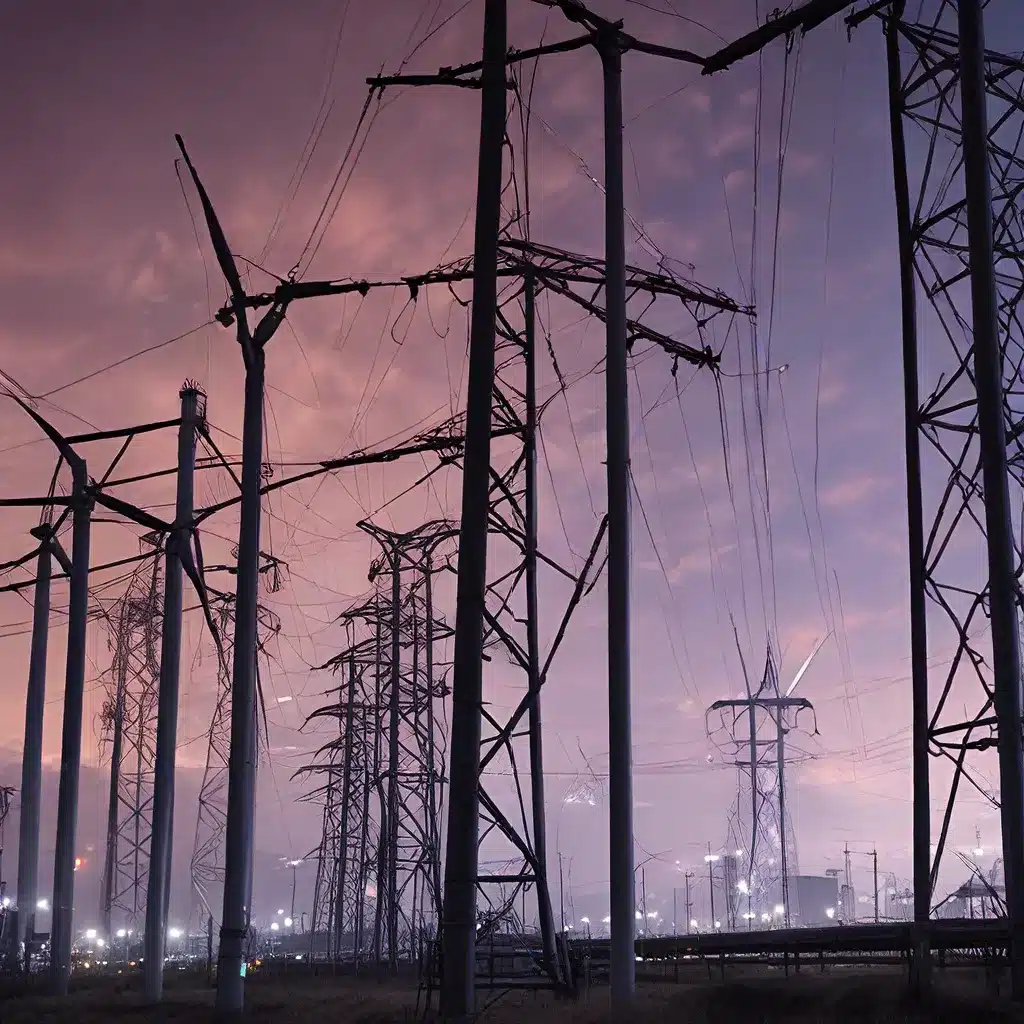
Unlocking the Power of Sensor Networks for Grid Modernization
As the electric grid evolves to accommodate the increasing complexities of distributed energy resources (DERs) and electric vehicles (EVs), utilities are facing a pressing need to enhance the reliability and efficiency of their power delivery infrastructure. Sensor network technologies have emerged as a transformative solution, empowering utilities to tackle multiple reliability challenges simultaneously.
At the heart of this transformation lies intelligent line sensing – a technology that provides enhanced system visibility and valuable insights through a network of sensors strategically deployed across the distribution grid. By capturing high-fidelity waveform data and integrating it with advanced analytics, utilities can unlock a trifecta of benefits: improved fault detection and location, enhanced load monitoring and asset management, and predictive anomaly detection for proactive maintenance.
According to industry experts, the distribution system accounts for 92% of all electric service interruptions, with aging infrastructure, severe weather events, and third-party causes contributing to this reliability challenge. Intelligent line sensing, coupled with analytics and machine learning, offers a multi-pronged solution to address these complex issues, enabling utilities to pursue multiple return on investment (ROI) streams and quickly justify their grid modernization investments.
Enhanced System Visibility and Fault Management
The deployment of line sensors and communicating faulted circuit indicators (FCIs) across overhead lines, underground cables, and distribution assets provides utilities with a more granular view of their power delivery infrastructure. By integrating sensor data with existing utility systems, such as supervisory control and data acquisition (SCADA), outage management systems (OMS), and distribution management systems (DMS), utilities can significantly improve their fault-finding processes.
Streamlined Fault Location and Restoration
With sensor data integrated into ADMS applications like fault location, isolation, and service restoration (FLISR), utilities can dramatically reduce customer minutes interrupted (CMI) and system average interruption duration index (SAIDI). By pairing sensors with non-communicating reclosers or feeder relays, these devices can participate in automated FLISR schemes, enabling swifter fault isolation and service restoration.
Patrol Time Savings and O&M Cost Reductions
The enhanced visibility provided by line sensors can also lead to substantial operational and maintenance (O&M) cost savings. By quickly detecting and locating faults, utilities can reduce patrol time by up to 65%, translating to significant cost reductions and faster restoration times.
Optimized Asset Management and Load Monitoring
Sensor deployments extend beyond fault management, providing invaluable insights for utility system planning and asset management. As the proliferation of DERs and EVs creates significant changes in historical load curves, relying solely on substation-level data is no longer sufficient for effective capacity planning.
Improved Load Forecasting and System Balancing
Intelligent line sensors strategically placed across the distribution grid deliver granular load data, enabling utilities to make more informed decisions regarding capacity planning, load balancing, and switching operations. This data-driven approach helps utilities preempt overloading issues, ensuring the reliable delivery of power to their customers.
Proactive Asset Condition Monitoring
When installed on underground residential distribution (URD) transformers, line sensors not only detect faults on the primary side but also monitor transformer loading. This real-time data on asset utilization empowers utility engineers to improve asset management and replace overloaded assets before they fail, mitigating the risks of outages and transformer fires.
Predictive Maintenance and Anomaly Detection
The most transformative capability of sensor networks lies in their ability to predict and prevent outages before they occur. By integrating sensor data with advanced analytics and machine learning, utilities can identify anomalies that serve as precursors to faults, enabling proactive maintenance and a significant reduction in unplanned outages.
Vegetation Management and Equipment Failure Prediction
Through machine learning-driven anomaly detection, line sensor data can identify waveform anomalies that are precursors to faults caused by vegetation contact or equipment failures, such as issues with insulators, cutouts, lightning arrestors, and transformers. Armed with this predictive intelligence, utilities can preemptively address these potential problems, reducing system average interruption frequency index (SAIFI) and yielding substantial O&M savings.
Establishing a Reliable Baseline
Achieving high-accuracy predictions requires a robust data collection period, typically 3 to 12 months, to establish a reliable baseline of normal grid behavior. Once this baseline is established, the analytics models can accurately identify anomalies that signal impending issues, allowing utilities to take proactive measures to prevent outages.
A Holistic Approach to Grid Modernization
The complexity of today’s distribution grid demands a comprehensive solution that can address multiple reliability challenges simultaneously. Intelligent line sensing with advanced analytics emerges as a technology that delivers a multi-pronged approach, providing immediate operational benefits while laying the foundation for long-term grid modernization.
The fault detection and load monitoring value streams offer quick ROI through reduced outage durations, O&M cost savings, and better-informed planning decisions. As these benefits unfold, the predictive maintenance capabilities of the anomaly detection value stream begin to systematically identify and address issues before they lead to unplanned outages, ultimately transforming the utility’s approach to grid reliability.
Sensor-networks.org stands at the forefront of this grid modernization revolution, empowering utilities with innovative solutions that harness the power of sensor networks and advanced analytics to deliver safe, reliable, and efficient power to their customers.
Unlocking the Full Potential of Sensor Networks
The convergence of intelligent line sensing, data integration, and predictive analytics represents a paradigm shift in the way utilities approach grid reliability and asset management. By embracing this holistic approach, utilities can unlock the full potential of sensor networks to tackle their most pressing challenges, from reducing outage durations and improving customer satisfaction to optimizing operational costs and enhancing long-term system resilience.
As the electric grid continues to evolve, the role of sensor networks and IoT technologies in enabling data-driven decision-making will only become more crucial. Utilities that invest in these transformative solutions will be well-positioned to navigate the complex landscape of grid modernization, delivering on their promise of safe, reliable, and efficient power for generations to come.